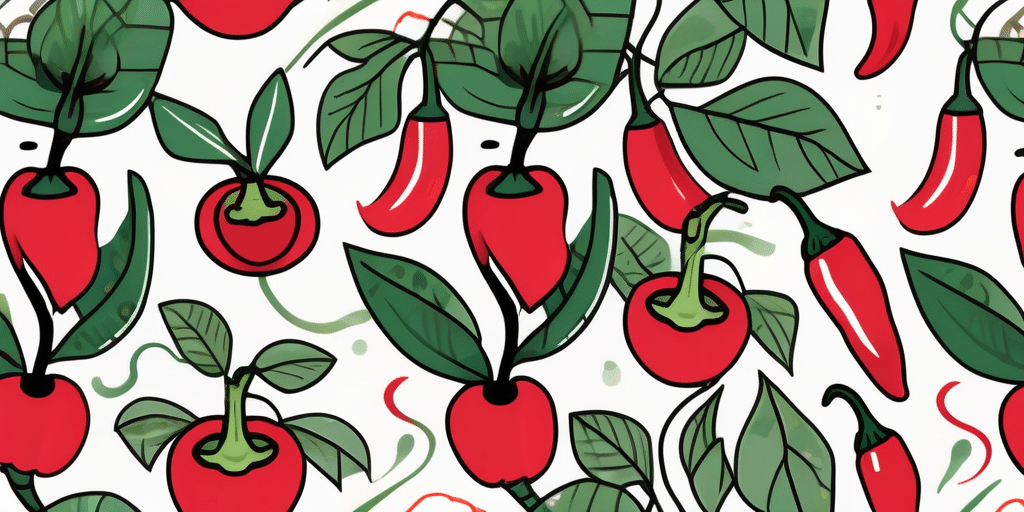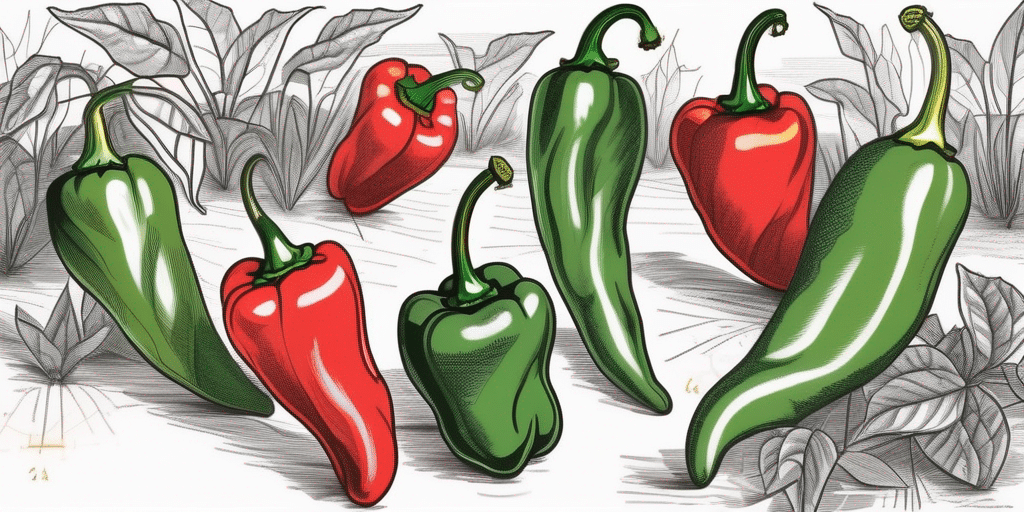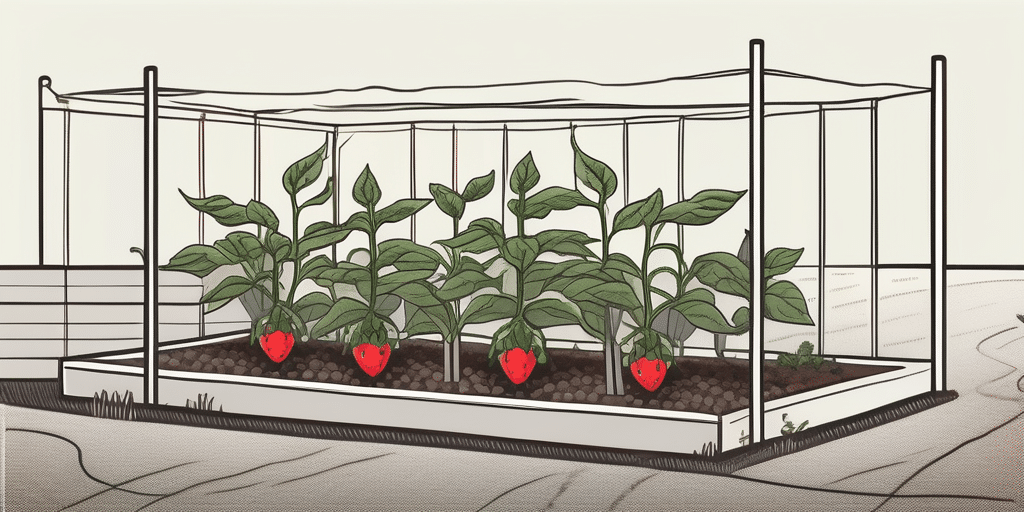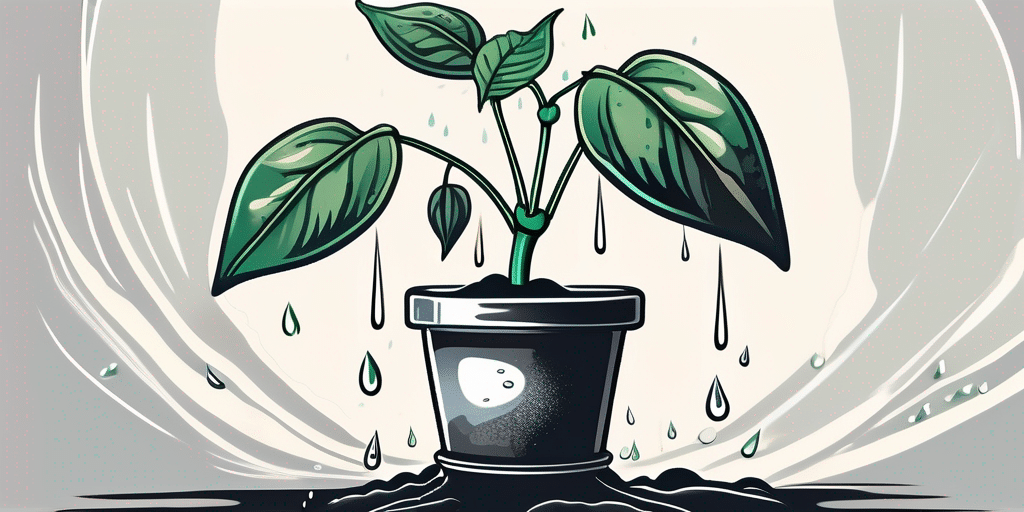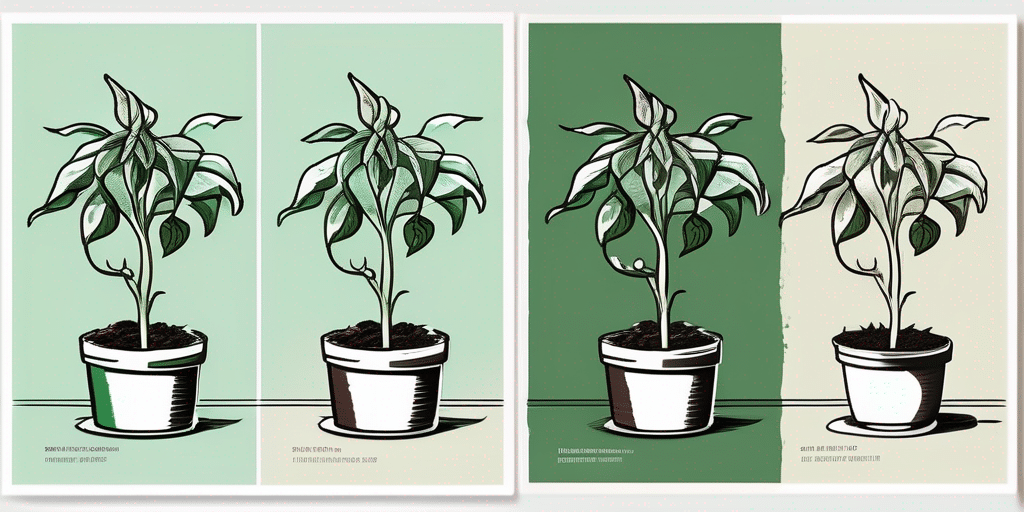Golden bell peppers are a delicious and versatile vegetable that can add flavor and color to your meals. Whether you’re a seasoned gardener or a beginner, growing your own golden bell peppers can be a rewarding experience. In this article, we will provide you with all the information you need to successfully grow golden bell peppers in your garden.
When to Start Golden Bell Peppers
Before you start growing golden bell peppers, it’s important to know when to start. Golden bell peppers are warm-season vegetables that require a long growing season to mature.
The optimal time to start golden bell peppers is in early spring, after the danger of frost has passed and the soil has warmed up. In most regions, this is usually around mid to late April.
If you live in a colder climate or want to get a head start on the growing season, you can start your golden bell pepper seeds indoors 8-10 weeks before the last expected frost date. This will allow you to transplant them outdoors once the weather warms up.
How to Grow Golden Bell Peppers From Seed
Growing golden bell peppers from seed is relatively easy and cost-effective. Here’s a step-by-step guide to help you get started:
- Fill a seed tray or small pots with a seed starting mix. This mix should be light and well-draining.
- Sow the golden bell pepper seeds on the surface of the soil and cover them lightly with a thin layer of soil.
- Mist the soil with water to keep it consistently moist. Avoid overwatering, as this can lead to damping off.
- Place the seed tray or pots in a warm location with bright, indirect light.
- A germination heat mat can help speed up the germination process.
- Keep an eye on the soil moisture and mist it as needed to prevent drying out.
- Once the seedlings have developed true leaves, you can transplant them into larger pots or containers.
- Harden off the seedlings by gradually exposing them to outdoor conditions before transplanting them in the garden.
How and When to Transplant Golden Bell Peppers
Transplanting is a critical step in growing golden bell peppers. Here’s how to do it:
The best time to transplant golden bell pepper seedlings is when they are 6-8 weeks old and have developed a sturdy root system. By this time, the danger of frost has likely passed, and the soil has warmed up.
- Choose a sunny location in your garden that receives at least 6-8 hours of direct sunlight each day.
- Prepare the soil by loosening it with a garden fork, removing any weeds, and incorporating organic matter such as compost.
- Space the pepper seedlings 18-24 inches apart to allow for proper air circulation and room for growth.
- Dig a hole slightly larger than the size of the root ball and gently place the seedling into the hole.
- Backfill the hole with soil and firm it gently around the base of the seedling.
- Water the transplanted seedlings thoroughly.
How to Plant Golden Bell Peppers – Spacing and Patterns
Proper spacing and planting patterns are important factors in growing healthy and productive golden bell peppers. Here are some guidelines to follow:
- Golden bell peppers should be spaced 18-24 inches apart in rows that are 24-36 inches apart.
- Planting in rows allows for easier maintenance and air circulation.
- If you are limited on space, you can also grow golden bell peppers in containers or pots. Make sure the container is at least 12 inches in diameter and has drainage holes.
- When planting in containers, you can space the seedlings 12-18 inches apart.
- Ensure that each plant has enough room to grow and spread its branches.
How Long to Grow Golden Bell Peppers
The time it takes for golden bell peppers to reach maturity can vary depending on the variety and growing conditions. On average, it takes about 70-90 days from transplanting to harvest.
Keep in mind that sweet peppers, including golden bell peppers, tend to take longer to ripen than hot peppers. Be patient and allow the peppers to fully ripen on the plant for the best flavor and sweetness.
Immature peppers can be harvested earlier if desired, but they may not have developed their full flavor and sweetness.
How to Water Golden Bell Peppers
Proper watering is essential for the health and productivity of golden bell peppers. Here are some tips to keep in mind:
- Golden bell peppers need consistent moisture to thrive, especially during hot and dry periods.
- Water the plants deeply, aiming for about 1 inch of water per week.
- Water at the base of the plants, avoiding wetting the leaves to prevent fungal diseases.
- Using a drip irrigation system or a soaker hose can help deliver water directly to the roots while minimizing evaporation.
- Monitor the soil moisture regularly and adjust your watering schedule as needed.
How to Fertilize Golden Bell Peppers
Fertilizing golden bell peppers is important to provide them with essential nutrients for healthy growth and abundant fruit production. Here’s how to fertilize your plants:
- Before planting, incorporate well-rotted compost or aged manure into the soil to improve its fertility.
- Golden bell peppers have a relatively low nitrogen requirement, so avoid using high-nitrogen fertilizers.
- Instead, use a balanced fertilizer with equal amounts of nitrogen (N), phosphorus (P), and potassium (K).
- Apply the fertilizer according to the package instructions, starting a few weeks after transplanting and continuing throughout the growing season.
- Side-dress the plants by applying the fertilizer along the sides of the planting row, lightly incorporating it into the soil, and watering afterwards.
- Using organic fertilizers is also a great option, as they provide slow-release nutrients and improve soil health.
Sunlight Requirements for Golden Bell Peppers
Golden bell peppers require an ample amount of sunlight to grow and produce sweet and flavorful fruit. Here’s what you need to know:
- Golden bell peppers thrive in full sun, which means they need at least 6-8 hours of direct sunlight each day.
- Choose a location in your garden that receives the most sun exposure throughout the day.
- Planting the peppers along the south or west side of your garden can maximize their sunlight exposure.
Soil Requirements for Golden Bell Peppers
Growing golden bell peppers in well-draining and fertile soil is essential for their success. Here’s what you need to know about soil requirements:
- Golden bell peppers prefer loamy soil with a pH range of 6.0-7.0.
- The soil should be rich in organic matter and well-draining to prevent waterlogging.
- If your soil is heavy clay or sandy, you can improve its texture and fertility by incorporating organic matter such as compost, aged manure, or peat moss.
- Soil testing can be helpful to determine if any amendments are needed to adjust the pH or nutrient levels.
How to Grow Golden Bell Peppers Outdoors
Growing golden bell peppers outdoors can be a rewarding experience. Here’s what you need to know:
Begin by preparing the soil as mentioned earlier, ensuring it is well-draining and fertile.
Plant the golden bell pepper seedlings in their designated spots, following the spacing recommendations.
Water the plants thoroughly after transplanting, and continue to provide them with consistent moisture throughout the growing season.
Monitor for pests and diseases, and take appropriate actions if needed.
Stake or cage the plants if they start to lean or become top-heavy with fruit to prevent them from bending or breaking.
Harvest the peppers when they have reached their desired size and color, ensuring they are fully ripened on the plant for the best flavor.
How to Grow Golden Bell Peppers Indoors
If you don’t have access to a garden or want to grow golden bell peppers year-round, you can grow them indoors. Here’s how:
- Select a sunny location in your home, such as a south-facing window or a room with grow lights.
- Plant the golden bell pepper seeds in containers or pots filled with a well-draining potting mix.
- Ensure the containers have drainage holes to prevent waterlogged soil.
- Keep the soil consistently moist, but not overly saturated.
- Provide the seedlings with at least 6-8 hours of artificial light per day if natural light is limited.
- Fertilize the plants regularly with a balanced liquid fertilizer formulated for vegetables.
- Rotate the containers regularly to provide even light exposure to all sides of the plants.
- Monitor for pests, such as aphids or spider mites, and take appropriate action if needed.
- Harvest the peppers as they ripen and are ready to be consumed.
How to Grow Golden Bell Peppers In Containers and Pots
Golden bell peppers can thrive in containers and pots, making them suitable for small gardens, balconies, or patios. Here’s what you need to know:
- Choose a container or pot that is at least 12 inches in diameter and has drainage holes.
- Fill the container with a well-draining potting mix, leaving about 2 inches of space at the top.
- Plant the golden bell pepper seedlings, following the spacing recommendations.
- Water the containers thoroughly after planting and maintain consistent soil moisture.
- Place the containers in a sunny location, providing the peppers with at least 6-8 hours of direct sunlight per day.
- Fertilize the plants regularly with a balanced fertilizer to ensure they receive the necessary nutrients.
- Monitor the moisture levels and adjust your watering schedule accordingly.
- Keep an eye out for pests and diseases, and take appropriate action if needed.
- Harvest the peppers as they mature and reach their desired size and color.
Golden Bell Peppers Companion Plants – What to Plant With & Not Plant With Golden Bell Peppers
Companion planting can benefit the growth and overall health of golden bell peppers. Here are some companion plants to consider:
- Tomatoes: These two plants complement each other well and can be planted together. Tomatoes help repel pests, while peppers can provide some shade for the tomato plants.
- Basil: Planting basil near your peppers can improve their flavor and deter pests.
- Marigolds: Marigolds are known to repel pests and can be planted as a border around your pepper plants.
- Petunias: These colorful flowers can attract beneficial insects that prey on pests that may attack pepper plants.
- Avoid planting peppers near members of the Brassica family, such as cabbage and cauliflower, as they can compete for nutrients and space.
Common Golden Bell Peppers Pests and Diseases
Golden bell peppers can be susceptible to various pests and diseases. Here are some common ones to watch out for:
Pests:
- Aphids: These small insects can suck sap from the leaves and stems, causing stunted growth and distorted foliage. Rinse the leaves with a strong stream of water or use insecticidal soap to control aphids.
- Spider Mites: These tiny pests can infest the undersides of leaves, causing yellowing and webbing. Remove heavily infested leaves and use insecticidal soap or neem oil to control spider mites.
- Snails and Slugs: These mollusks can chew holes in the leaves and fruit. Use organic snail and slug controls, such as diatomaceous earth or beer traps, to protect your plants.
Diseases:
- Bacterial Spot: This bacterial disease causes dark, water-soaked lesions on the leaves and fruit. Prevent infection by spacing plants properly and avoid overhead watering.
- Anthracnose: This fungal disease can cause sunken black lesions on the fruit. Remove infected plant material and use fungicides labeled for anthracnose control.
- Verticillium Wilt: This soil-borne fungal disease can cause wilting, leaf yellowing, and stunted growth. Rotate your crops regularly and choose resistant pepper varieties to prevent verticillium wilt.
Regularly inspect your plants for signs of pests or diseases and take appropriate action to prevent their spread. It’s best to apply organic or least-toxic pest control methods to minimize the impact on beneficial insects and the environment.
How & When to Harvest Golden Bell Peppers
Harvesting golden bell peppers at the right time ensures optimal flavor and texture. Here’s what you need to know:
- Golden bell peppers can be harvested at any stage of maturity, but they are usually picked when they have reached their full size and color.
- Wait until the peppers have turned from green to their desired color, whether it’s yellow, orange, or red.
- Use clean garden shears or a sharp knife to cut the peppers from the plant, leaving a short stem attached.
- Avoid pulling or twisting the peppers, as this can damage the plant.
- Harvesting regularly encourages the plant to produce more fruit, so make sure to check your plants every few days.
- The flavor and sweetness of golden bell peppers often intensify as they fully ripen on the plant.
How to Store & Preserve Golden Bell Peppers
Proper storage and preservation can extend the shelf life of golden bell peppers. Here’s what you need to know:
- If you plan to use the peppers within a few days, store them in a cool and dry place away from direct sunlight.
- For longer storage, you can refrigerate the peppers in a plastic bag. This will help retain their freshness and crispness for up to two weeks.
- To freeze golden bell peppers, wash and slice them into desired sizes, then blanch them in boiling water for 2-3 minutes. Cool them in ice water, pat them dry, and pack them in freezer-safe bags or containers. They can be stored in the freezer for up to 12 months.
- Canning golden bell peppers is another option for long-term preservation. Follow proper canning procedures to ensure safety and flavor.
Frequently Asked Questions
1. Can golden bell peppers be grown in containers?
Yes, golden bell peppers can be successfully grown in containers as long as the containers are large enough and have proper drainage.
2. How often should I fertilize my golden bell pepper plants?
Golden bell peppers benefit from regular fertilizing throughout the growing season. Apply a balanced fertilizer every 4-6 weeks according to the package instructions.
3. Can golden bell peppers be grown from seeds saved from store-bought peppers?
It’s possible to grow golden bell peppers from seeds saved from store-bought peppers, but there may be variations in flavor, size, and productivity. It’s best to use seeds from open-pollinated or heirloom varieties for more consistent results.
4. How do I know if my golden bell peppers are ripe?
Golden bell peppers are ripe when they have reached their desired color, whether it’s yellow, orange, or red. They should also feel firm and have a glossy skin.
5. Why are my golden bell peppers not setting fruit?
Several factors can contribute to poor fruit set in golden bell peppers, including temperature extremes, lack of pollination, inadequate watering, and nutrient deficiencies. Ensure your plants receive proper care and address any issues accordingly.
In Conclusion
With the right knowledge and care, you can successfully grow your own golden bell peppers. From starting seeds to transplanting, watering, fertilizing, and dealing with pests and diseases, each step plays a crucial role in the success of your pepper plants. Enjoy the process of growing your own golden bell peppers and savor the delicious fruits they produce!
Join Our Growing Community
Ready to turn your golden bell pepper aspirations into a bountiful reality? Subscribe for free to How to Grow Everything and start building the garden of your dreams today! Receive personalized gardening advice tailored to your specific location, grow zone, and experience level. Our family is dedicated to helping you succeed in all your gardening endeavors with the best tips, deals, and special offers. Join thousands of happy gardeners who trust us for their gardening needs — all at no cost. Let’s grow together!

